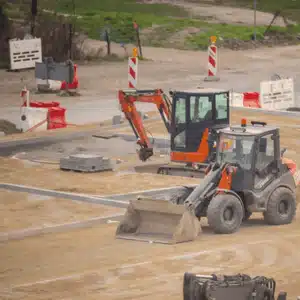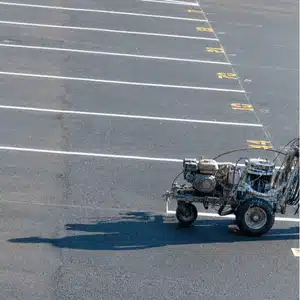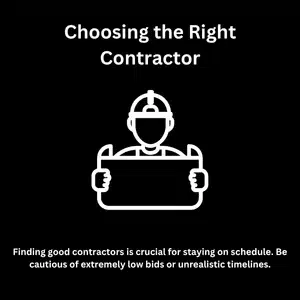How Long Does It Take to Build a Parking Lot? Discover the Timeline
How long does it take to build a parking lot? Building a parking lot is a big project for any business owner. The time needed depends on several factors. Most commercial parking lot projects take 2 to 4 weeks to complete from start to finish.
The exact timeline varies based on size, weather, and ground conditions. A small 20-space parking lot might finish in just 10 days. A large 200-space parking lot could take 6 weeks or more. If using concrete, the surface must cure overnight before proceeding. An asphalt paving contractor working with an asphalt surface speeds the process.
Large square foot projects may also require phased work. Whether using concrete or asphalt to build a parking lot, the process must allow for proper maintenance planning. Many businesses build a parking lot with concrete drive lanes and asphalt stalls for cost efficiency. Always consult experienced pros to build a parking lot correctly.
Planning and Site Preparation Phase

The building construction process begins with planning and design, which may take days to weeks. Engineers map parking lot space layout, traffic flow, and entrances. Early decisions impact cost and maintenance long term.
Next comes site prep. Crews remove old asphalt, debris, or existing structure and grade the ground for drainage. In Central Texas, clay soil often requires stabilization with lime or cement to support building a durable parking lot. A compacted gravel base supports asphalt paving. Poor prep causes cracks and potholes later, increasing cost and maintenance needs.
Property owners often ask, "How long does it take to build a parking lot?" Expect 3 to 7 days for prep, longer if conditions are poor. The entire build a parking lot timeline varies by location, weather, and size. Cars create wear and tear, so building a cost effective parking garage is key.
Knowing "how long does it take" helps with planning and controlling cost. Whether you're building a new parking lot or improving an old one, smart choices today can break future cost cycles and simplify maintenance as cars come and go. Always build a parking lot with durability in mind.
Asphalt Paving and Installation
Asphalt paving moves fast—most parking lot floors go down in 1 to 3 days. Crews must lay the hot asphalt while it’s warm and properly compacted to avoid future cracks.
Standard parking lot areas get 2–3 inches of asphalt pavement; heavy traffic zones or a parking garage need 4+ inches or concrete. Parking garages face constant traffic and heavier loads, so proper thickness helps reduce cost from repairs.
Weather conditions influence the paving. Rainy weather halts work, and temperature drops below 50° delay it. Central Texas allows paving from March to November.
New asphalt can cure overnight; expect cars to use it after 24–48 hours, trucks after 3–7 days. Parking garages should be maintained regularly to prevent cracks. Skipping maintenance leads to high cost later. Whether building a parking lot or a parking garage, proper installation ensures longevity. Always expect that a well-prepared, maintained parking garage will better withstand use over time.
Final Details and Opening

The final phase adds important finishing touches. Line striping produce individual parking spaces and directional arrows. This work happens after the asphalt cures enough to walk on.
Striping crews paint lines, numbers, and handicap symbols. They also mark fire lanes and loading zones. Quality striping makes the lot safer and more organized for customers.
Additional features may include lighting, curbs, or landscaping. Parking lots require electrical work and concrete foundations. Each pole can add a day to the project timeline.
Some businesses choose concrete wheel stops or speed bumps. These safety features need proper installation and curing time.
A final inspection checks all work before opening. Contractors verify that lines are straight, drainage works properly, and the surface meets specifications.
Key Factors That Affect Timeline
Several important factors determine how long your parking lot project will take:
Size matters most. Each parking space covers about 300 square feet including drive lanes. A 50-space lot needs roughly 15,000 square feet of paving. Larger lots take proportionally longer to complete.
Site conditions vary widely. Clean, flat parking areas move faster than those needing demolition or extensive grading. Removing old pavement or structures adds significant time.
Weather creates the biggest delays. Rain stops excavation and paving work completely. Extreme heat or cold also slows progress. Central Texas gets spring thunderstorms that can delay projects for days.
Material choice influences timing. Asphalt paving finishes faster than concrete. Asphalt lots can open in 2 to 3 days after paving. Concrete needs a full week before heavy use.
Contractor experience shows. Skilled asphalt paving contractors work more efficiently. They anticipate problems and coordinate different work phases smoothly. Inexperienced crews often face delays and quality issues.
Choosing the Right Contractor

Finding good contractors is crucial for staying on schedule. Get quotes from several different contractors in your area. Compare their proposed timelines along with costs.
Ask about their experience with similar projects. Check references from recent customers. Be cautious of extremely low bids or unrealistic timelines.
A quality contractor will explain factors that might affect your project's timeline. They should discuss weather contingencies and how they handle delays.
Good communication prevents problems. Discuss your needs clearly upfront. Ask how they schedule paving around your business operations.
Central Texas Weather Considerations
Central Texas climate affects construction timing significantly. Hot summers help asphalt cure quickly but produce challenging work conditions.
Spring brings heavy thunderstorms that can delay projects. Fall weather is often ideal for paving work. Mild winters allow construction but occasional cold snaps stop asphalt work.
Schedule paving during favorable weather windows when possible. Avoid winter months if your timeline is flexible.
Maintenance Planning

Plan for future maintenance when building your new parking lot. Regular seal coating every 3 to 5 years extends pavement life significantly.
Fill cracks to prevent water damage. Properly maintained asphalt can last 20 to 30 years with good care even with heavy traffic.
Timeline Expectations
Most commercial parking garages follow this general timeline:
Week 1: Site preparation, demolition if needed, grading, and base installation.
Week 2: Asphalt paving, initial curing period.
Week 3: Line striping, lighting installation, final details.
Week 4: Final inspection, cleanup, and opening.
Smaller projects may finish in 10 to 14 days. Large or complex parking garages can take 6 weeks or more.
Building a parking lot requires patience but constructs lasting value. The investment in proper construction pays off through years of reliable service for your customers.
Work with experienced contractors who understand local conditions. Plan for weather delays and communicate your needs clearly. With good planning, your new parking lot will be ready to serve your business efficiently and cost effectively.